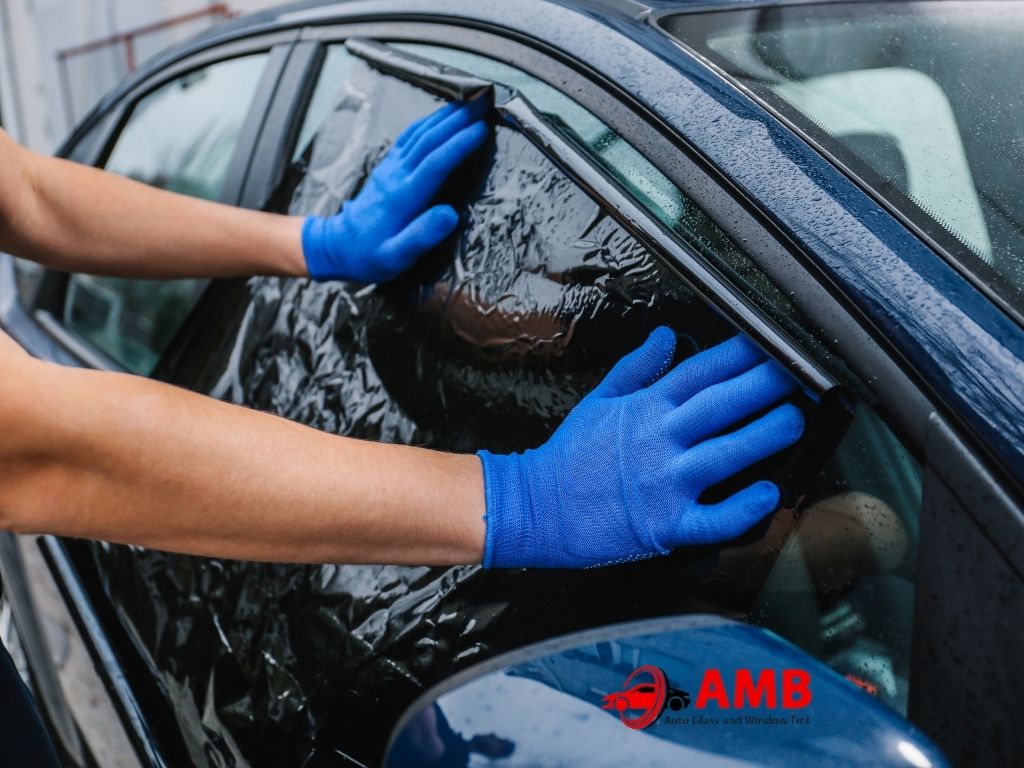Among these, auto glass and window tints hold a unique position in the automotive world, ensuring both aesthetics and functionality. For San Diego residents, window tinting can be more than just a stylistic choice; it’s often a necessity given the city’s sunny disposition.
In exploring window tinting San Diego services further, it’s essential to dive into the science, costs, quality assessment, and common problems. By understanding these aspects, car owners can make informed decisions for their beloved vehicles.
How can you tell the quality of tint?
As a consumer or even a professional installer, determining the quality of a tint can be pivotal for various reasons, ranging from aesthetics to functionality and longevity. Here are some factors to consider:
-
Visible Clues
The first and most straightforward method to gauge tint quality is by visually inspecting it. A high-quality tint should be free of bubbles, imperfections, and shouldn’t turn purple over time.
Additionally, it should adhere well to the window without any peeling edges. If these signs are evident, it’s an indication of either a poor-quality tint or substandard installation.
-
Feel and Thickness
Another way to judge tint quality is by feeling its thickness and texture. A good quality tint film will feel smooth to the touch and be consistently thick across its surface. This consistency ensures that it provides uniform UV protection and heat reduction.
On the other hand, thinner, inconsistent films might not provide the same level of protection and may be more prone to wear and tear.
-
Manufacturer and Warranty
Knowing the manufacturer of the tint film can be a significant indicator of its quality. Established brands in the tinting industry often have rigorous quality control measures in place and are more likely to produce high-quality products.
Moreover, a warranty provided by the installer or manufacturer can further vouch for the tint’s quality. A long-term warranty indicates confidence in the product’s durability and performance.
What is the lifespan of tint?
The durability of window tints is influenced by several factors. The quality of the tint material and the installation process, as discussed previously, are chief determinants. Additionally, the car’s exposure to sunlight, the type of cleaning agents used, and the overall maintenance can affect how long the tint lasts.
Typically, most window tints can last anywhere from 5 to 10 years. However, high-quality, professionally installed tints have been known to last beyond a decade with proper care. It’s essential to note that over time, even the best tints might begin to show signs of wear, such as fading or bubbling. When these signs become apparent, it might be time to consider a replacement.
A few tell-tale signs indicate that a window tint has reached the end of its lifespan. These include fading colors, the tint turning purple, bubbling, peeling edges, and reduced heat or UV protection. If multiple such signs appear, it’s likely that the tint is aging and needs replacement.
How much does window tinting cost in San Diego?
Window tinting prices aren’t universal. In San Diego, several factors play a role in determining the overall cost. The type of vehicle you own, for instance, can influence the price since some cars have more intricate window designs than others.
The quality of the tint material chosen and the labor rates of the tinting company are other significant determinants. A high-quality tint film will undoubtedly cost more but also lasts longer and provides better protection against UV rays.
To give a ballpark figure, the average cost for a standard sedan window tinting in San Diego might range from USD$100 to USD$400 or more. However, SUVs and trucks, given their larger window surface area, can cost slightly more. Also, specialty tints or custom jobs can add to the overall expenditure.
It’s always advisable to gather multiple quotes from different providers to get an understanding of the current market rate.
When considering the cost of window tinting, car owners should look beyond the initial price tag. Economical tinting options might seem attractive due to their lower upfront cost, but they might not offer the same durability, UV protection, or heat rejection as their premium counterparts.
Investing a bit more in a premium tint can often result in longer-lasting satisfaction and fewer replacements over time.
What are the most common window tinting packages?
San Diego’s sunny disposition necessitates the need for high-quality window tinting. Here are some of the most sought-after window tinting San Diego packages, each with unique features and benefits tailored to different needs.
-
Color Stable Window Tint
Features: Color stable window tint boasts of a unique design that prevents the film from turning purple with time. It ensures consistent color, retaining the aesthetic appeal of the tint for a longer duration.
Advantages: Being budget-friendly, this type of tint is perfect for those who want to achieve a combination of privacy, UV protection, and aesthetic appeal without breaking the bank.
-
Metalized Window Tint
Features: Metalized window tint uses tiny metallic particles embedded within the film. These particles not only give the tint a shiny finish but also help in reflecting sunlight, reducing heat, and strengthening the window.
Advantages: This tint works exceptionally well over factory-tinted glass, enhancing the existing tint’s features. It provides additional UV protection and heat rejection, making it ideal for cars that come with some level of factory tinting.
-
Ceramic Window Tint
Features: Ceramic window tints are revered for their superior heat rejection capabilities without reducing visibility. Using nano-ceramic technology, these tints are adept at keeping the car’s interior cool and blocking harmful UV rays without relying on dark shades.
Advantages: It’s a favorite among many due to its balanced benefits, offering excellent heat reduction without compromising on clarity. While it might be priced higher than some other options, its long-lasting benefits often justify the cost.
-
Infrared Rejection Tint
Features: As the name suggests, this tint specializes in rejecting infrared rays, which are primarily responsible for heat. It efficiently blocks a significant portion of these rays, ensuring maximum heat reduction.
Advantages: For those who prioritize comfort and wish to keep their car interiors as cool as possible, this tint stands out as the ultimate choice. While it might come with a premium price tag, the unparalleled heat rejection often makes it worth the investment.
-
Air Series
Features: The Air Series offers a unique proposition. It provides heightened UV protection without darkening the windows, making it perfect for those who want protection without altering the appearance of their vehicle.
Advantages: This series is excellent for individuals who aren’t keen on the dark window look but still want the UV protection benefits. Given San Diego’s sunny climate, this type of tint can be an optimal choice for those prioritizing skin protection over aesthetics or privacy.
What percent window tint is best?
Window tinting isn’t a one-size-fits-all solution. Depending on your personal preferences, legal regulations, and the specific purposes you have in mind, the ideal tint percentage can vary.
The percentage associated with window tint refers to the amount of visible light that the tint allows to pass through. So, a 20% tint means that only 20% of the visible light penetrates through the tinted glass, making it quite dark, whereas a 70% tint allows 70% of the light in, rendering it much lighter.
The best percentage largely depends on individual preferences and the intended purpose of the tint. For many, the primary reason to get window tints is to increase privacy.
Darker tints, like those around 20%, can offer significant privacy, making it harder for outsiders to see inside. However, darker tints can also reduce the driver’s visibility, especially during nighttime. Lighter tints, such as 50% or 70%, strike a balance, offering a degree of privacy without significantly compromising visibility.
It’s essential to be aware of the legal restrictions related to window tinting. Different regions have varying laws, with some places allowing darker tints while others have stricter rules in place. Before making a decision, car owners should check the local regulations to ensure that their choice complies with the law.
What causes tint to fail?
Just like any other product, window tints are not immune to wear, damage, or improper installation. Several factors can lead to a tint failing to perform as expected or deteriorating prematurely. Here are some of them:
-
Poor Installation Techniques
One of the most common reasons for tint failure is shoddy installation. This can lead to bubbles forming between the tint film and the window, peeling edges, or the tint not adhering well to the glass.
The precision required during installation means that it’s a job best left to professionals. Even a tiny speck of dust can lead to a noticeable imperfection.
-
Inferior Quality Materials
As with many products, you often get what you pay for with window tinting. Cheaper, low-quality tints can fade, turn purple, or degrade faster than their higher-quality counterparts.
Over time, this can lead to decreased UV protection and heat rejection, negating the very purpose of the tint. Opting for a known brand and quality material ensures the tint’s longevity and continued performance
-
Improper Aftercare
Once the tint is installed, how it’s cared for can play a significant role in its lifespan. For instance, cleaning tinted windows with ammonia-based cleaners can cause discoloration and degradation of the tint film.
Similarly, rolling down windows immediately after tinting or exposing the tint to harsh conditions before it’s fully cured can also lead to premature failure. Following the care instructions provided by the installer can help avoid these pitfalls.
Conclusion
Window tinting is not just an aesthetic addition but a functional necessity, especially in regions with a consistent sunny disposition like San Diego. Making the right choice in tint types, understanding the nuances of installation, and being informed about the longevity and care of the tint can ensure car owners get the most out of their investment.
Window tinting San Diego cars requires a careful balance between local regulations, individual preferences, and the technical specifics of the tinting process. Discover the difference a professional touch can make. Consider reaching out to specialists like AMB Auto Glass and Window Tint for your next window tinting venture.

